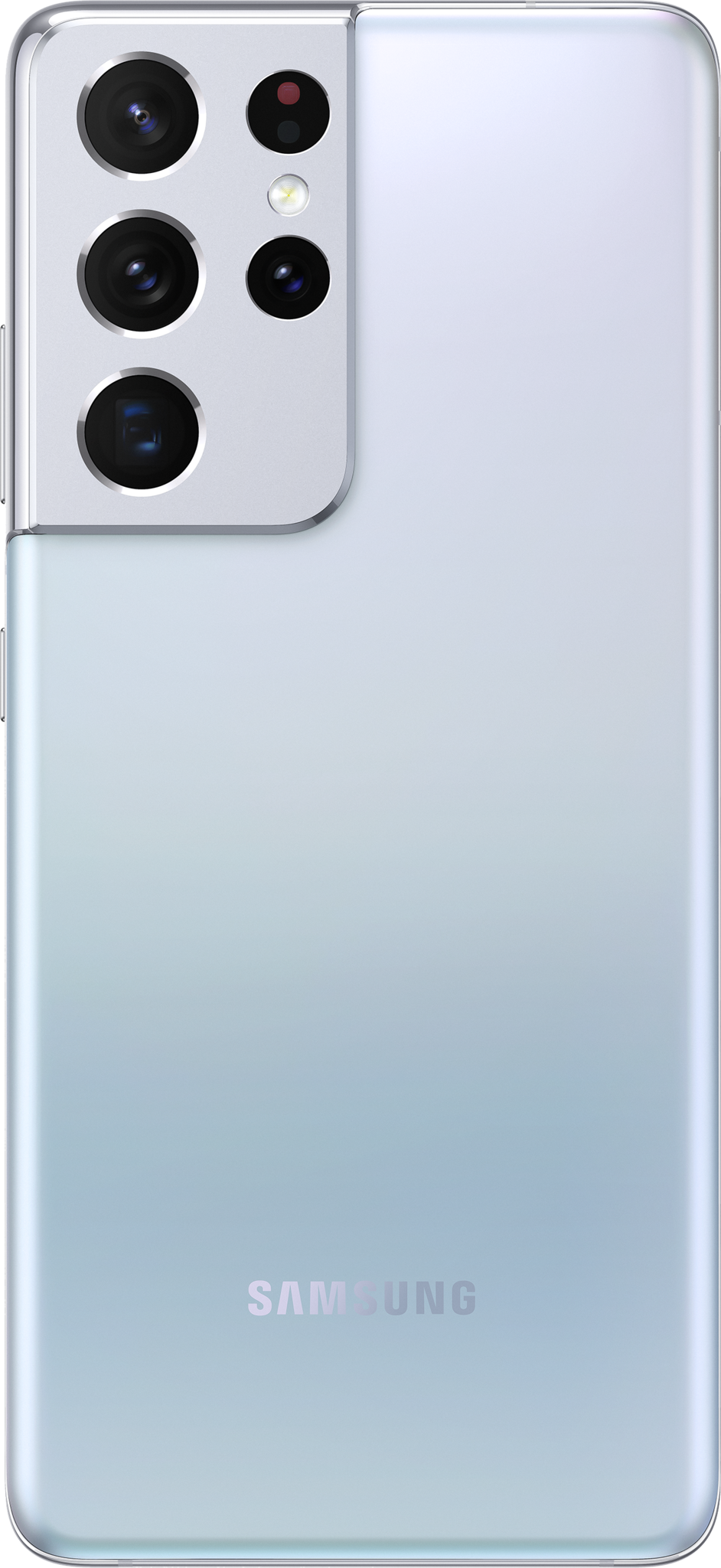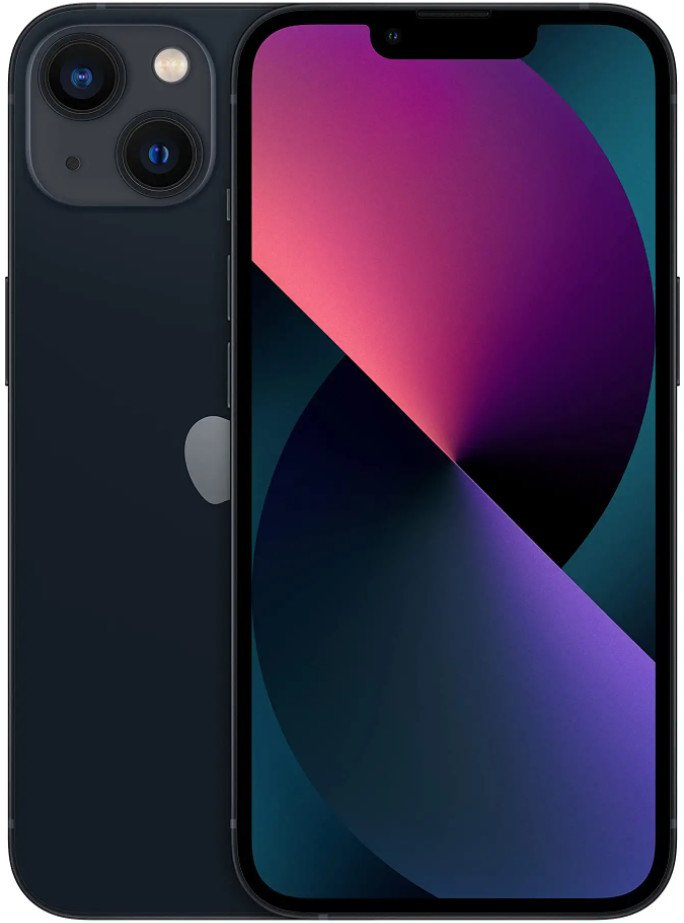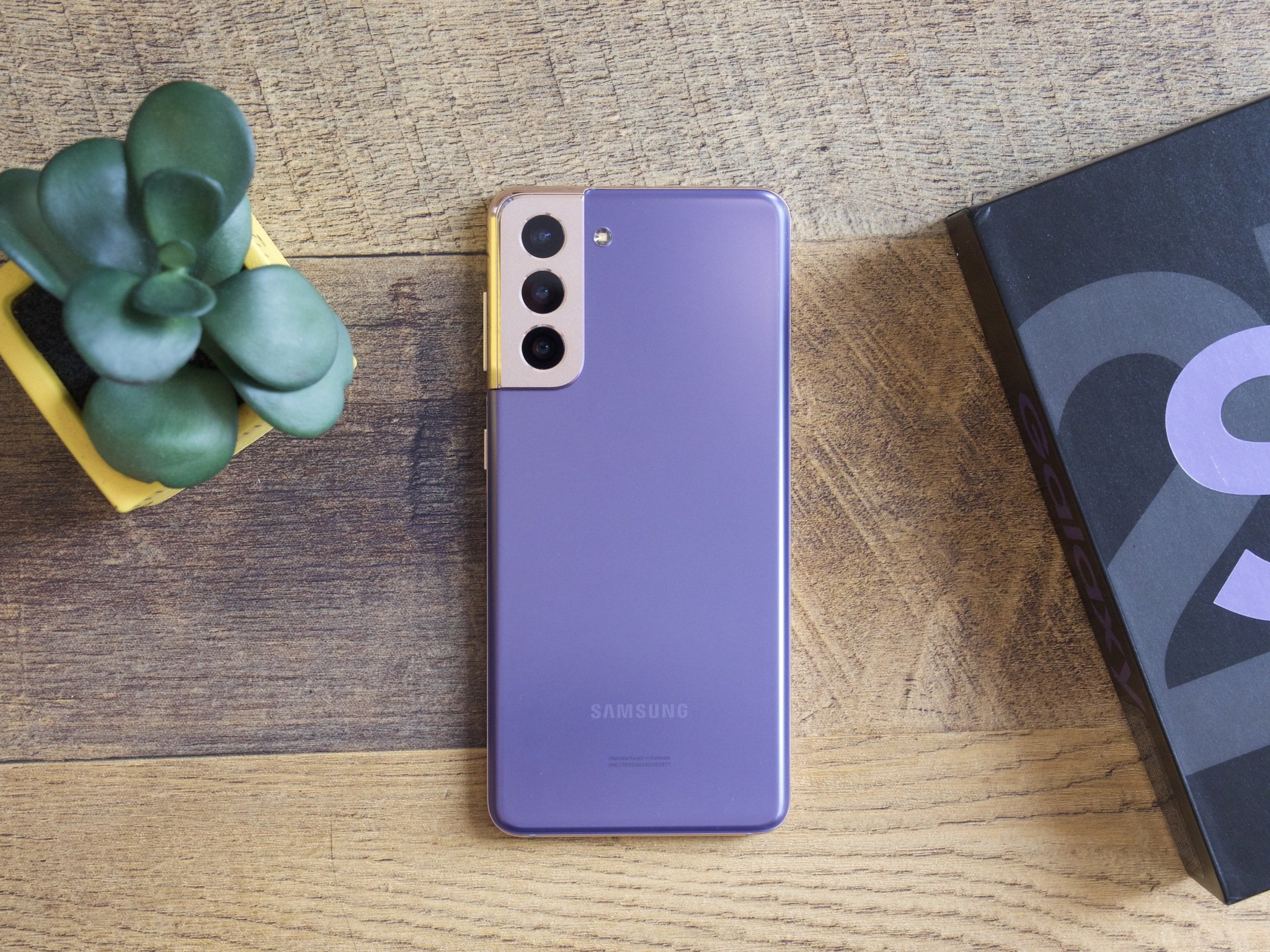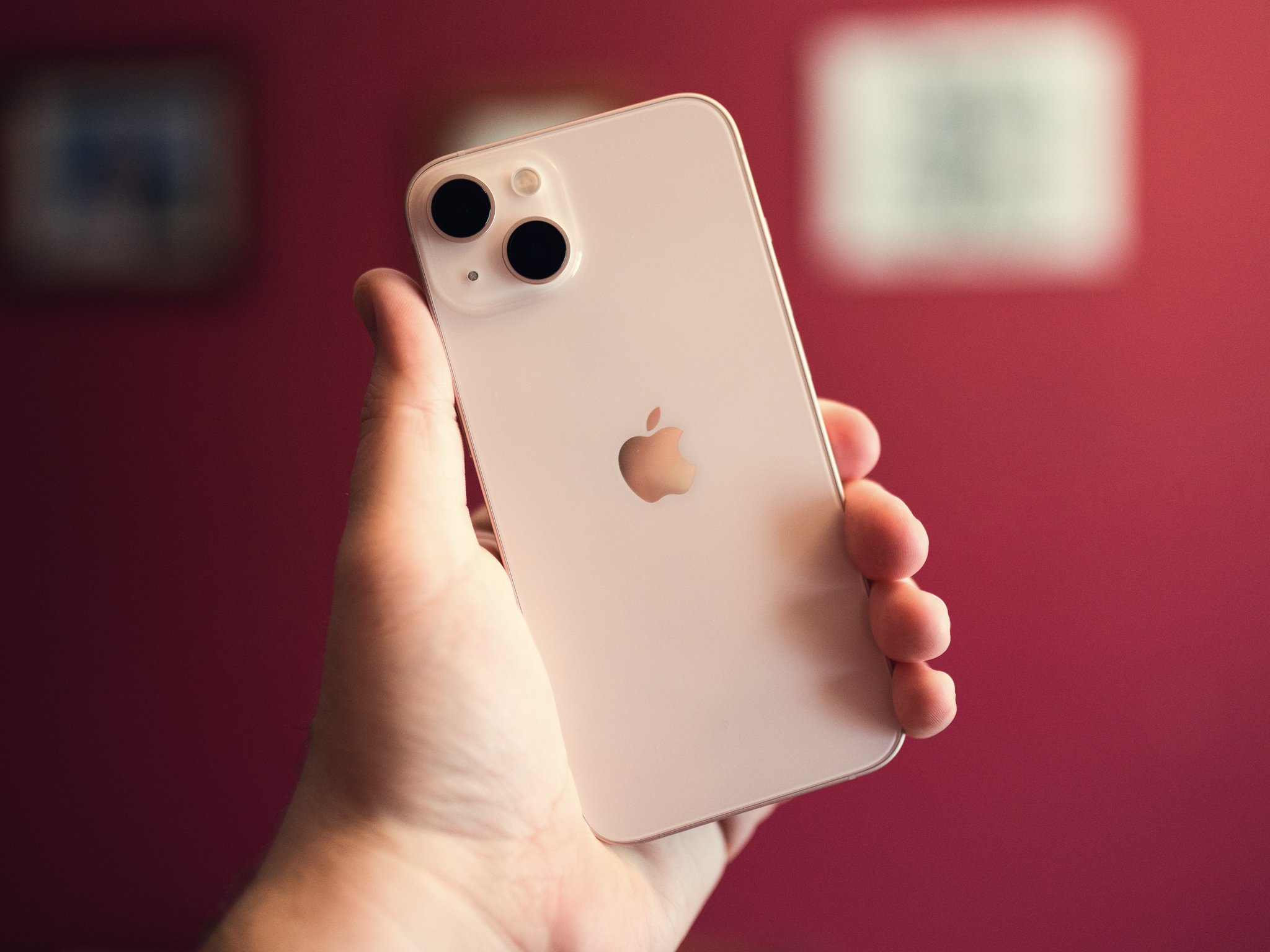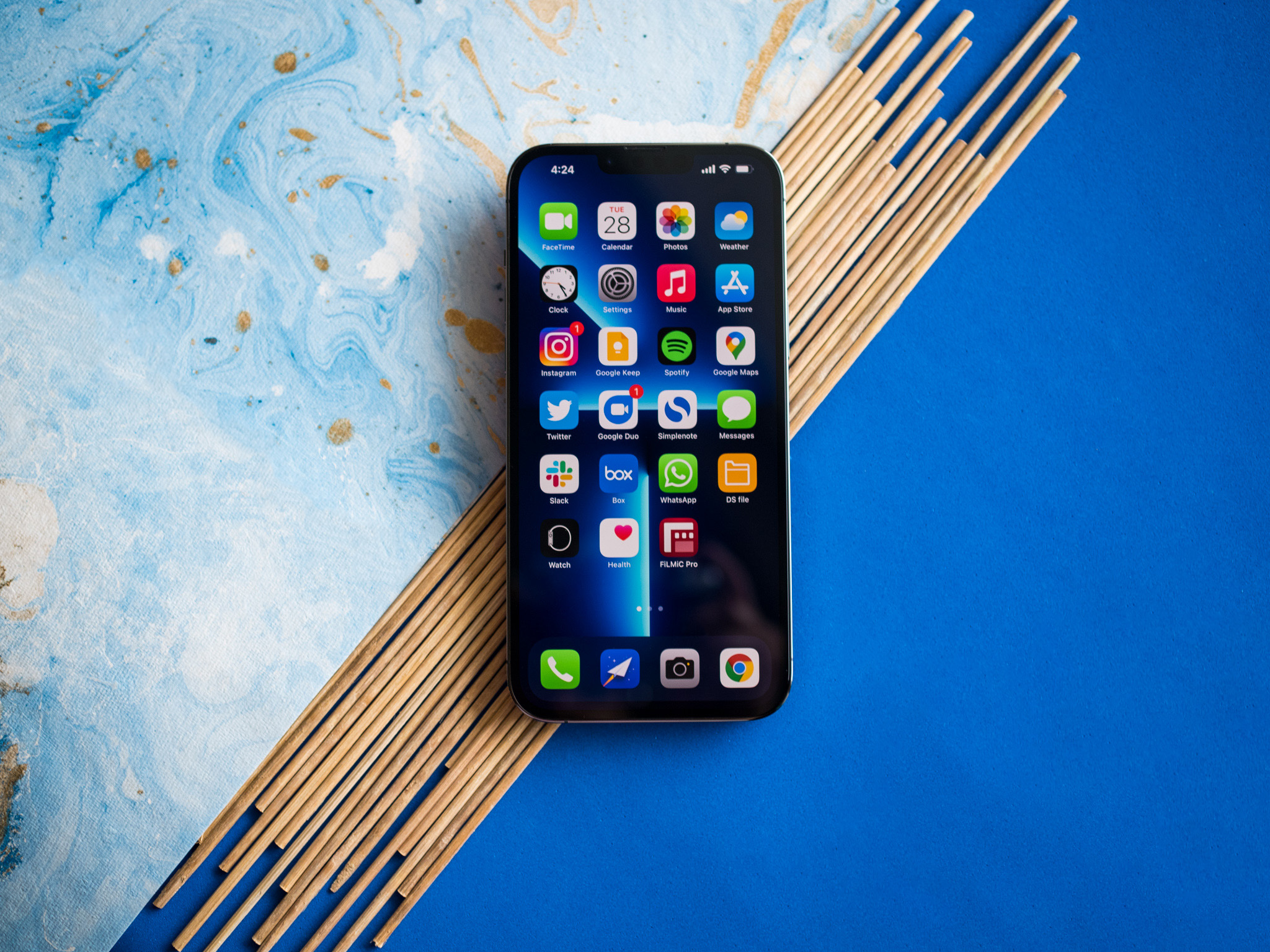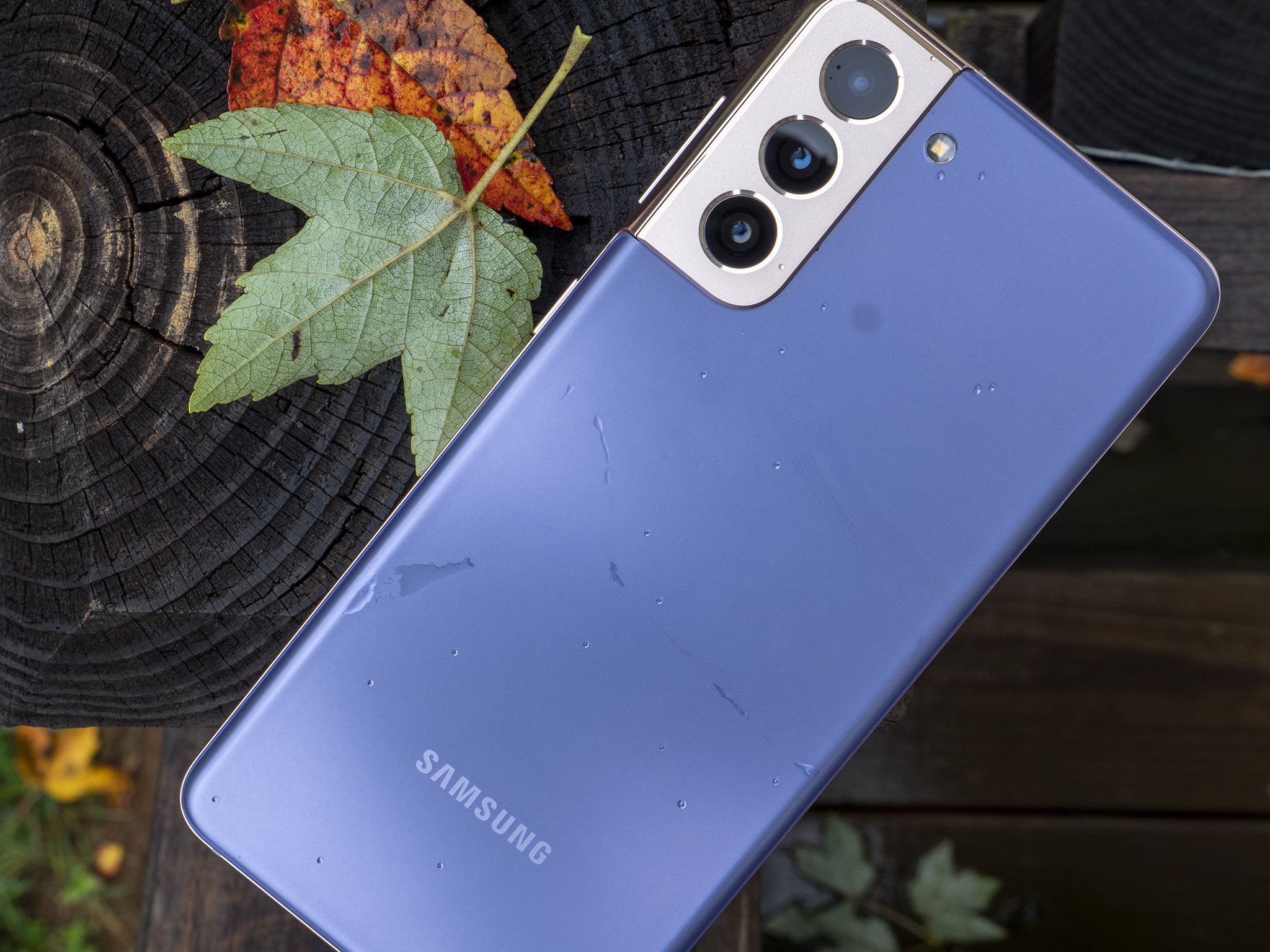Samsung Galaxy S21 vs. iPhone 13
The familiar choice
Pros- Sublime 120Hz AMOLED panel
- Fast internal hardware with global 5G
- Great cameras
- Fast wired and wireless charging
- Three guaranteed Android version updates
- Plastic back
- No microSD slot
- No charger in the box
The Galaxy S21 delivers the best features of the S21 Ultra at a more affordable price point. You get a stunning 120Hz AMOLED screen backed by the latest high-end hardware from Qualcomm, fast wired and wireless charging, amazing cameras, and three guaranteed Android version updates. Sure, it has a few rough edges, but as an overall value, you are getting a lot here.
iPhone 13A worthy alternative
Pros- Fastest internal hardware on a phone
- High-quality OLED panel
- Standout cameras
- Five years of software updates
- Global 5G with mmWave as standard
- Screen still at 60Hz
- Notch is unsightly
- No always-on mode
- Still uses a Lightning connector
The iPhone 13 doesn't change too much from its predecessor in terms of design, but it has upgraded cameras that take wonderful photos, internal hardware that's the fastest of any phone today, and you'll get five years of software update as standard. It is missing out in a few areas, but the update longevity combined with the cameras make the iPhone 13 an enticing choice.
The Galaxy S21 and iPhone 13 offer the latest hardware, exciting cameras, and evocative designs. They do all of these while costing $800, making them a decent option if you're looking to maximize value. So if you're looking for a flagship and don't want to shell out $1,000, let's take a look at what you're getting and what device you should buy.
Galaxy S21 vs. iPhone 13: Design and screenThe Galaxy S21 is still a leading choice for one of the best Android phones of the year. Samsung's decision to launch it at a lower price point than its predecessor was the right move, and while the S21 has a plastic back, it doesn't miss out on the screen, cameras, or internal hardware. As for the iPhone 13, it shares a similar design as the iPhone 12, but there are several interior upgrades, including a new camera system and faster internal hardware.
In terms of the design, the Galaxy S21 has a clear lead - the new camera housing makes it look premium.
Let's kick things off with the design. Phone design hasn't changed too much lately, with manufacturers now focused on making minor tweaks to their design languages. That's evident with the Galaxy S21; Samsung has retained the same flowing lines as the S20 series, but the big change is the camera housing at the back. The metal housing with the large rings gives the phone added visual flair, and it distinguishes the design rather well.
The same cannot be said for the iPhone 13. The phone shares the same boxy design with flat sides as its predecessor, and other than the new color variants, not much has changed from a design point of view. However, the positioning of the cameras inside its housing has changed. They're now arrayed diagonally, but other than that, this is still the same design aesthetic as last year. That's not a bad thing by any measure, but the iPhone 13 is missing that flair.
Having said that, the iPhone 13 is just that little bit shorter and thinner, and the size, along with the flat sides, make it easy to hold and use - unlike the gigantic iPhone 13 Pro Max. On the other hand, the Galaxy S21 has a curvier design that fits well in hand, and in terms of usability, you won't find any issues with either device.
The one downside of the S21 is that it uses a polycarbonate back, with the iPhone 13 offering a glass back like most other phones in this category. However, both phones have an aluminum chassis, and for the most part, you won't notice that the back of the S21 isn't made out of glass. But if you're not planning on using it with a case and need a phone with a frosted glass back, you'll need the iPhone 13.
Then again, the iPhone 13 still has a large notch at the front, while the S21 has a much smaller cutout that isn't anywhere as distracting. The screen itself is a 6.1-inch OLED with HDR10 and Dolby Vision with a custom Gorilla Glass layer that's one of the most durable in the industry today.
The biggest issue with the iPhone 13 is that it doesn't have a 120Hz panel - you're limited to 60Hz.
While the screen itself is a joy to use, the biggest drawback is that it doesn't have 120Hz yet. That's limited to the Pro models this year, which puts the iPhone 13 at a significant disadvantage against the Galaxy S21. All Android devices in this category feature 90Hz or 120Hz panels as standard, so it feels a bit shortsighted for the iPhone 13 to miss out on it.
Thankfully, the Galaxy S21 doesn't have any such shortcomings. The 6.2-inch AMOLED panel scales from 10Hz to 120Hz, and there's a level of fluidity to everyday interactions that you just don't get on the iPhone. Unfortunately, a high-refresh-rate screen is one of those things that you'll have to use to understand just how much of a difference it makes in daily use, and iPhone users will have to wait one more year for the feature to make its way to the standard model.
Galaxy S21 vs. iPhone 13: HardwareOn the hardware side of things, both devices have a lot to offer. The Galaxy S21 is powered by the 5nm Snapdragon 888 in the U.S. and Exynos 2100 in global markets, and it delivers more than adequate power for anything you throw at it.
The Galaxy S21 is no slouch, but the iPhone 13 easily wins out when it comes to the internal hardware .
Having said that, the iPhone 13 has the edge in this area thanks to the monstrous A15 Bionic. The custom design combined with class-leading performance in single-core and multi-core use cases gives the iPhone 13 a clear lead. The S21 doesn't feel like it is short on power, but the iPhone 13 just has that much more headroom for the future.
In terms of storage, both phones come with 128GB for the base variants. The S21 has 8GB of RAM, but because iOS doesn't require a lot of memory, the iPhone 13 has 4GB of RAM by default - you never get the feeling that the phone is getting bogged down even while multitasking.
You don't miss out on the extras on either device - there's water-resistance and wireless charging.
As for connectivity, you get Sub-6 and mmWave 5G as standard on both phones in the U.S., with the global models featuring Sub-6 5G. There's Wi-Fi 6, Bluetooth 5.0, and NFC, and both devices have great vibration motors that deliver fine-tuned feedback. Other extras include IP68 dust and water resistance; both phones have the same level of ingress protection and weather extreme conditions without any hassle.
Switching over to the battery, the S21 manages to last a full day thanks to its 4000mAh battery, and when you need to charge it, there's 25W wired and 15W wireless charging. The iPhone 13 also lasts all day without any issues from its 3240mAh battery, and it goes up to 23W wired and 15W wirelessly over MagSafe. That said, the downside with the iPhone 13 is that it still uses the Lightning connector, so you won't be able to use USB-C to charge it up.
| Category | Samsung Galaxy S21 | iPhone 13 |
|---|---|---|
| Operating system | Android 11 One UI 3.1 | iOS 15 |
| Display | 6.2-inch 120Hz Dynamic AMOLED 2400x1080 (20:9) HDR10+ Gorilla Glass Victus | 6.1-inch 60Hz OLED 2532 x 1170 (19.5:9) Dolby Vision Ceramic Shield |
| Chipset | Snapdragon 888 1 x 2.84GHz X1 3 x 2.42GHz A78 4 x 1.80GHz A55 Adreno 660 5nm | Apple A15 Bionic 2 x 3.1GHz Firestorm 4 x 1.8GHz Icestorm 4-core custom GPU 5nm |
| RAM | 8GB LPDDR5 | 4GB |
| Storage | 128GB/256GB UFS3.1 | 128GB/256GB/512GB |
| MicroSD slot | ||
| Rear camera 1 | 12MP f/1.8, OIS 8K at 30fps 4K at 60fps | 12MP, f/1.6 1.4um, OIS 4K at 60fps |
| Rear camera 2 | 12MP, f/2.2 wide-angle | 12MP, f/2.4 120-degree wide-angle |
| Rear camera 3 | 64MP, f/3.0 telephoto, OIS 3x optical zoom | |
| Front camera | 10MP f/1.7 auto focus | 12MP, f/2.2 4K at 60fps |
| Connectivity | 5G (Sub-6 and mmWave) Wi-Fi 6 MU-MIMO Bluetooth 5.0 LE, NFC, GPS | 5G Sub-6, mmWave (U.S.) Wi-Fi 6, Bluetooth 5.0 NFC, A-GPS |
| Audio | USB-C Stereo speakers | Lightning Stereo speakers |
| Battery | 4000mAh Non-removable | 3240mAh Non-removable |
| Charging | USB-C PD3.0 Fast charge (25W) 15W wireless charging | Lightning (23W) 15W MagSafe Wireless |
| Water resistance | IP68 | IP68 |
| Security | In-display fingerprint sensor Face unlock | Face ID |
| Dimensions | 151.7 x 71.2 x 7.9mm 172g | 146.7 x 71.5 x 7.7mm 174g |
| Colors | Phantom Gray, Phantom White, Phantom Violet, Phantom Pink | Starlight, Midnight, Pink, Blue, PRODUCT(RED) |
Samsung is doing all the right things in terms of software. For example, the S21 is running the public build of One UI 4 based on Android 12, and it should get the stable update by the end of 2021.
For long-term updates, the iPhone 13 is still the phone to beat - but iOS has its share of issues.
However, the iPhone 13 still has the lead when it comes to update longevity. Samsung now offers three Android version updates and four years of security updates for most phones, but the iPhone 13 will get at least five years of iOS updates. That level of long-term updates is unheard of on Android, and even Google with the Pixel 6 series only guarantees five years of security updates.
While it's great that the iPhone 13 will pick up more updates, there are a few things about iOS 15 that are irksome - particularly if you're considering a switch away from Android. Notification management is still a mess, and while the new Focus mode fixes that to an extent, it isn't anywhere near as fine-tuned as Android. File system access continues to be more annoying than necessary, and there are little quirks that you won't find on Android.
Galaxy S21 vs. iPhone 13: It's down to what you wantBoth the iPhone 13 and Galaxy S21 have a lot to offer, and at the end of the day, choosing between the two comes down to what you're looking for in a phone. There's very little wrong with either device - as is the case with all flagships - and the deciding factor is based on your preferences.
Regardless of whatever phone you go with, you are getting great value.
If you're familiar with Android and want to switch to a new phone with a sleek design and great cameras, the S21 is the obvious choice. I like the 120Hz AMOLED screen quite a bit, the internal hardware is on par with other flagships, and it takes amazing photos in just about any lighting scenario.
But if you're willing to switch over to iOS, the iPhone 13 is a great starting point. The phone has a design that's easy to hold and use, it features the fastest internal hardware available today, and the cameras are outstanding for photos and videos. You also get more updates, but iOS isn't as customizable as Android, and it has issues with file system access and notifications. If you don't mind the changes in iOS, the iPhone 13 has a lot to offer.
Galaxy S21The familiar choice
$820 at Amazon$800 at Best Buy$800 at Samsung
The best Android value flagship
Using an older Android phone? You will love what the Galaxy S21 has to offer. The 120Hz AMOLED screen is sublime in day-to-day use, the internal hardware blazes through demanding games, and you get cameras that take stellar photos at any time of day. Combine that with wireless charging, water resistance, all-day battery life, and three Android version updates, and you get a great overall package.
iPhone 13A worthy alternative
$829 at Amazon$800 at Best Buy$829 at Apple
An easy recommendation
If you're considering a switch to iOS, the iPhone 13 has a lot to offer. It has the fastest hardware currently available, a great camera system that takes stunning photos and videos, and a high-quality OLED panel. It misses out on OLED, uses a Lightning connector, and iOS does things a little differently to Android, but you get more updates, and that in itself makes the iPhone 13 worthy of consideration.
